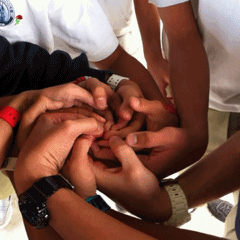This week, United Nations Member States continue the intergovernmental negotiations on the “post-2015 development agenda.”

Yes, that’s a wonky sentence – but the post-2015 agenda, a framework to address pressing global challenges over the next 15 years, will have a big real-world impact, so we want to spend a minute breaking down what the agenda is and why you should care.
What is the post-2015 development agenda?
Simply put: It will be our collective “to-do” list. The post-2015 agenda will include a set of global goals for the world to work toward from 2016-2030 to address challenges such as poverty, hunger, disease, and environmental destruction. In September, world leaders will gather at the United Nations to agree on what goals will be part of the agenda, often called the “Sustainable Development Goals.”

Where did the idea for global goals come from?
Let’s go back to 2000. That year world leaders gathered at the UN and created the “Millennium Development Goals,” eight goals to reduce poverty and improve lives around the world.
These goals, often called the MDGs, set targets to achieve by the end of 2015. They cover issues that range from getting more kids in schools to alleviating hunger to expanding access to clean drinking water.
By creating a common agenda with concrete targets, the MDGs spurred governments, the private sector, and civil society groups to action. We’ve seen important progress on many challenges:
- Extreme poverty has been cut in half.
- Child and maternal deaths have been reduced by nearly 50%.
- Enrollment in primary school has reached 90% in developing regions – and worldwide, nearly as many girls are in primary school as boys.

Why do we need a post-2015 agenda?
While we’ve made a lot of progress on the MDGs, we haven’t achieved all of the goals yet – so we need to finish the work of the MDGs. At the same time, we need to address a more comprehensive set of issues including inequality, environmental sustainability, and climate change.
One lesson we’ve learned over the past decades is that you can’t separate people from the planet. If we want to live in a world where every person has dignity and opportunity, then we need to make sure people have access to clean water to drink AND clean air to breathe; that they have affordable housing AND their homes aren’t threatened by rising sea levels; that they have access to education and jobs AND that drought and extreme weather don’t threaten their livelihoods.

Ok. So how does the process work to create the post-2015 development agenda?
Over the past few years, the UN has consulted with governments, businesses, and civil society groups around the world to get their thoughts. The UN has also gotten input from millions of citizens through the MY World global survey.
Last year, a group of UN Member States called the “Open Working Group” put forward a proposal for the next set of goals, which call for ending poverty, reducing inequality, protecting our ecosystems, achieving gender equality, and many other important goals.
Now, governments are negotiating the goals and will come together for a summit at the UN in September to agree to the next agenda.

What’s my role in all of this?
- Get informed. You can learn more here and here.
- Share this information with your friends, families, and networks, so they know that 2015 is a critical year for the future of people and the planet.
- Make sure your leaders know you care about the goals and you want strong action in 2015: Write letters, send emails, raise your voice online with the hashtag #action2015.
- Become a Global Citizen.
You can stay tuned to the UN Foundation for updates on the process and how you can join with the UN to help build a better world in 2015 and beyond.




 View All Blog Posts
View All Blog Posts